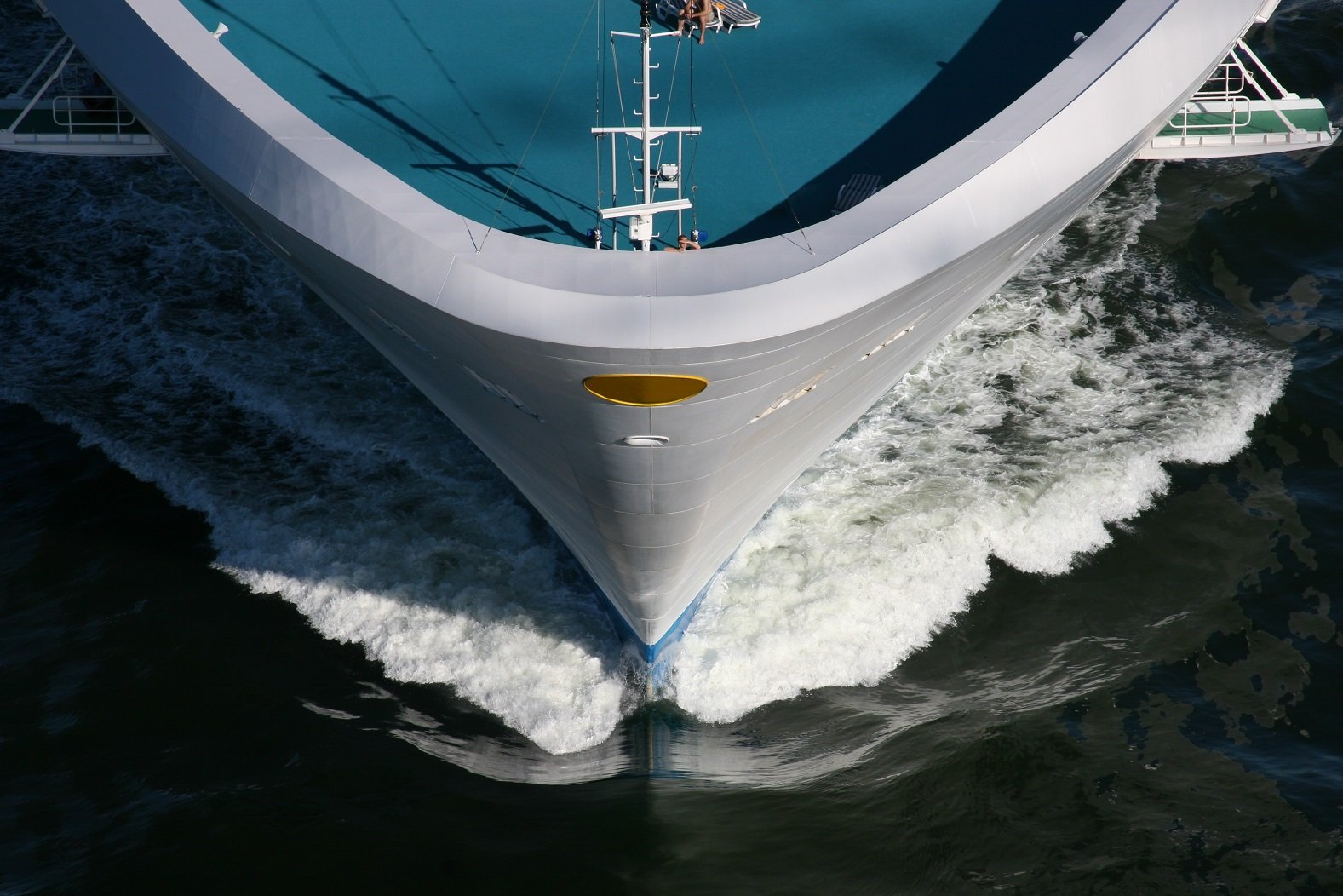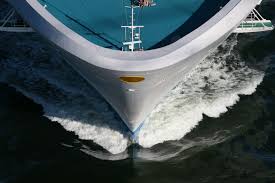It's awfully tempting to buy into the battered cruise line industry these days. Shares of Carnival (CCL +1.42%) (CUK +1.40%), Royal Caribbean (RCL +2.36%), and Norwegian Cruise Line Holdings (NCLH +0.72%) have been crushed, and even after big bounces on Monday, the shares find themselves 78% to 83% off their 52-week highs.
The stocks could quadruple and still not be back to where they were at their peaks, but what if you can buy low and double your money in a couple of years? That wouldn't seem too shabby, but let's make sure you consider all the factors weighing down the industry. Let's go over five questions any bullish thesis on buying Carnival, Royal Caribbean, or Norwegian Cruise Line needs to answer.

Image source: Royal Caribbean.
1. When will ships sail start sailing again?
Cruise lines can't generate revenue if they're not entertaining passengers, and that's not happening anytime soon. Royal Caribbean and Carnival have canceled all sailings starting before May 12. NCL is hoping to start welcoming passengers the day before that. Some itineraries have been pushed out even further into 2020.
Mid-May doesn't seem so far away, but this is a date that's already been extended. The industry obviously doesn't want to cancel sailings unless the cruise lines are sure they won't happen, but unless there's a miraculous turn for the better in the containment of COVID-19, no one should be surprised if we see more cancellations in the coming weeks.
2. When will passengers start sailing again?
One of the biggest problems with cruising right now is the deluge of negative stories. Sick and in some cases dying passengers have been stuck on quarantined vessels. If you're a fan of cruises as a form of travel -- and I am, with a Baltic cruise booked for this summer that I'm not likely to be able to take -- you're going to be somewhat hesitant the next time you sail. If you've never gone on a cruise before, you're probably erasing that from your bucket list.
Cruise lines have been through this before. Norovirus outbreaks, rare terrorist events, weather-related mishaps, and even folks who accidentally fall overboard make for brand-bruising headlines. But this is different. Cruise ship outbreaks dominated the news last month. It's going to take some time before consumer demand is where it used to be for the industry.
3. Who will work on these ships?
It's not just passengers who are getting sick and dying. Crews have been even more susceptible, especially since they're typically boarding in cramped quarters with several other crew members. Cruise ships often fly under the flags of non-U.S. countries, and the crews lean heavily on international personnel.
Having the world as your hiring pool may make it an easy sell despite the historically lousy pay, but it wouldn't be a surprise if wages have to go higher when ships start sailing again. Apart from any current legal liabilities, future crews will no longer be wooed by visiting exotic ports of call and serving the affluent.
4. How much money will cruise lines lose before returning to profitability?
The cruise lines have been lining up billions in financing lately in hopes of getting through this interruption. The foreign-registered lines won't be direct beneficiaries of the U.S. bailout, even if some of the consumer stimulus check proceeds go toward cruise vacations. The problem is that the cruise industry doesn't know how much dry powder it will need. The losses will be massive for Carnival, Royal Caribbean, and NCL through their canceled sailings, and then we get to the refund requests.
The three publicly traded cruises combined to generate a profit of $4.7 billion on $38.2 billion in revenue last year. This year will be a wash, but even if these boats are back on the water next month -- spoiler alert: they won't -- things won't return back to normal come 2021.
The pipeline of future bookings will need to be greased again, and passengers will expect lower prices. Folks on canceled cruises opting for future cruise credit instead of immediate refunds in exchange for hundreds of onboard credit will demand to pay less for their loyalty.
Carnival, Royal Caribbean, and NCL will also have to spend heavily on marketing to restore consumer faith in their now tarnished brands. There's no way revenue approaches $38.2 billion in 2021, especially if capacity is clipped in response to sluggish demand. Analysts see the cruise lines earning a lot less next year than they did in 2019, and at least one Wall Street pro sees Carnival in the red for 2021. If the industry resumption dates continue to get pushed out and we're in a global recession in 2021 instead of an economic expansion like in 2019, you can be sure that more analysts will be pushing out profitability until 2022 or later.
5. Is your money better off somewhere else?
You're realistic. You know it will take ages before the three cruise stocks take out their earlier highs. You'll settle for a double by 2022 -- or maybe even 2023 if you're not greedy -- and maybe one or more of today's cruise stocks will get there.
However, you also have plenty of industries that won't face the same kind of headwinds. You have brands that are still healthy in the minds of consumers, with businesses that will bounce back quicker even in a challenging economic environment. Quality stocks in industries with brighter prospects got hammered, too. You don't need to choose from among Carnival, Royal Caribbean, and NCL when there's a world of top stocks to buy out there ready to take you on a voyage.









